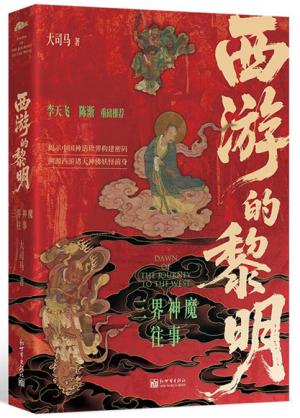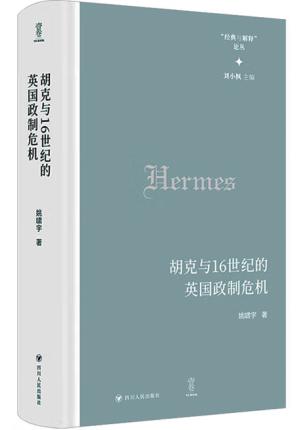新書推薦:

《
西游的黎明:三界神魔往事
》
售價:NT$
396

《
壹卷YEBOOK——胡克与16世纪的英国政制危机
》
售價:NT$
418

《
金融中的机器学习:理论与实践
》
售價:NT$
653

《
五代十国史(上、下册)
》
售價:NT$
857

《
飞越疯人院
》
售價:NT$
352

《
家族财富管理:成功投资七要务(第二版)
》
售價:NT$
505

《
时刻人文·始皇好读:帝业与人生的书籍史
》
售價:NT$
265

《
幸福博弈论
》
售價:NT$
352
|
| 編輯推薦: |
1.以对话为原则,《国际艺术史学会学刊》为世界各地艺术史的研究学者提供展示学术成果的平台。
2.从非洲雕塑、中国山水画,再到当代装置艺术,本书主题广泛、多元,对于普通的艺术和艺术爱好者来说,是一个了解各国艺术的窗口。
3. 本书集结世界各国大学、研究所的艺术家与艺术史学者,作者们以深厚的学术与理论功底,对“对话”这一概念做深入诠释。国内艺术史、艺术理论等领域的研究者读来也会有所启发和帮助。
|
| 內容簡介: |
|
CIHA Journal of Art History (国际艺术史学会学刊)旨在为世界各地艺术史研究学者创造一个展示自己学术成果的平台,以此促进国际艺术史研究与艺术史教育的交流与发展。本期主编彼得·施内曼(Peter J. Schneemann)和蒂里·迪弗勒内(Thierry Dufrêne)选取由中国、加拿大、芬兰、南非等国家的学者完成的多篇论文,展示不同文化背景的学者如何理解、阐释“对话”这一概念。来自不同文化背景的作者们,从中西传统艺术到现代艺术等多个主题,展示“对话”原则赋予艺术与艺术史研究的创造力与生命力。
|
| 關於作者: |
彼得·施内曼(Peter J. Schneemann),伯尔尼大学艺术史研究所教授,现当代艺术史系主任,研究方向包括美国艺术史、话语分析、艺术观察范式、生态学、艺术教育、档案、艺术展览和博物馆学等。
蒂里·迪弗勒内(Thierry Dufrêne),为巴黎南泰尔大学当代艺术史教授,曾于2004年至2016年担任国际艺术史学会委员会科学秘书。曾出版《绝美的人偶,妮基·桑法勒与当代艺术家的人偶创作》《莫雷尔的发明:图像机器》等,策划展览“萨尔瓦多·达利个展”“莫雷尔的发明”等。
|
| 目錄:
|
Introduction Peter J. Schneemann/Thierry Dufrêne
The Third Abstraction: The Possibility and Impossibility of Dialogue LaoZhu
Comparative Epistemology as Art-Historical Practice Jennifer Purtle
Seriality: Artistic Articulations of Engagement Sophia Olivia Sanan
Dialogue with Non-Humans in Contemporary Art and the Expansion of Posthuman Subjectivity Jing Yang
Always More-than-human Katve-Kaisa Kontturi/Murat M. Türkmen/Jenni Vauhkonen/Suvi Veps?
Contributor Biographies
|
| 內容試閱:
|
At a council meeting of the Comite International d‘Histoire de l’Art (CIHA)in 2012, Professor Thierry Dufrene, Professor Perer J. Schneemann and I jointlyproposed the restoration of the CIHA Journal.
The prototype of the journal is Mitteilungen des K.K. Oesterreichischen Museums fur Kunst und Industrie (Commun.ications of the Imperial Royal Austrian Museum of Art and Industry) published in Vienna in 1873. It is in this pioneering journal that Fortsetzung, the meeting minutes of the Erster Kun.stwissenschaftlicher Kongress in Vienna (the lst Art History Congress, held from September 1-4,1873) was first released. The journal went on hiatus intermittendy over the years. For instance, it appeared in the form of Bulletin du CIHA (Bulletin of CIHA, Paris) from 1965. But it eventually went into a prolonged suspension.
Having a journal is important to any learned society. What we hope to achieve is a sustainable journal of our own so as to bring societies and scholars of our member countries closer together.
In today‘s world of art history, there is clearly no shortage of journals.
Therefore, we need to be extremely thoughtful when starting a new one. Our conception started to take shape during the preparation for the 34th WorldCongress of Art History CIHA in Beijing.
The holding of the Congress in China signifies that art history, a discipline mostly built on the Western understanding of art, ought to reexamine itsconcepts and methods so as to enlarge its disciplinary scope, which will expand its universality and enable the discussion of phenomena and issues relat.ed to the entire human race’s art practice-and form a global perspective.
Western art history usually studies history through the analysis of the recreation of reality by art and images and their correlations (numesis); however,not all arts are documented in the form of historical images and phenomena, that is the visual evidence of history. In fact, those aspects of the functions, purposes,and significance of art which are not represented in images are often neglected or even concealed in the current framework of art history. With this in mind, the Chinese committee of the 34th Congress set the purpose of the Congress-to explore art and art history in different eras and culcures.
After consulting delegates of different nationalities, the CIHA secretariat accepted Peter J.Schneemann‘s proposal and adopted the theme ”TERMS,”intending to, under the guidance of the CIHA principles, expand CIHA’s work to a global scale. While exchanges on the international level usually happen between countries with similar cultures, shared values, methods, and ideologies, exchanges on the global level mean the inclusion of individuals, arts, and art histories from every part of the world.
As a discipline, art history welcomes the solution of one problem with different methods. Therefore, CIHA strives to include all art phenomena from every culture,to highlight their differences, and, ultimately, to promote communication and exchange between cultures. And it is wich this mission in mind that we restart the journal of CIHA, taking it to the future that we want to create.
In addition to this, “African art” carries a particular epistemic burden because of the ways in which it has historically been constructed as “art.” Valentine Yves Mudimbe argued that the term emerges from a Western epistemic project of order and categorisation, rather than a cross-cultural engagement with aesthetics, histories, and epistemologies. Mudimbe argues, “(w)hat is called African art covers a wide range of objects introduced into a historicising perspective of European values since the eighteenth century.” Consequently, he wonders whether “understood in their initial form and significance, [these objects] would not have created a radical ‘mise en perspective’ of Western culture.” The radical epistemological potential of African art, which has been systematically evacuated by dominant knowledge economies, lies in the fact that recognising ancient traditions of art and visual culture in Africa (and the ontological and epistemological consequences that follow from them) challenges the false premise that African history begins only after the colonial encounter and challenges racial hierarchies and racialised justifications of colonialism. If a “mise en perspective” of Western culture were catalysed, it may enable an expansion of the very notion of art, possibly one detached from the idea of a commodity and detached from the idea of “an original.”
At present however, not only is historical art from Africa measured in relation to the idea of originality, it also is framed through authentication processes (or performances) which often rely on fabricated notions of “mysticism,” “tradition,” “tribe” and “magic.” Current debates on the restitution of art from Africa, have critiqued these fabricated notions as having a carceral character. Appiah describes this double bind in the construction of African art: “[a]n ideology of disinterested aesthetic value (the baptism of Negro art as Aesthetic) meshes with the international commodification of African expressive culture, a commodification that requires (by the logic of the space clearing gesture) the manufacture of Otherness.”9 The requirement to validate authenticity through professional expertise is beneficial to those occupying seats of power in this discursive field (art dealers, curators, scholars), as the system enables the validation of certain kinds of knowledge about objects over others.
|
|










